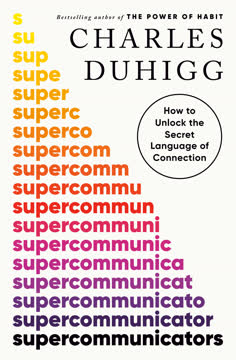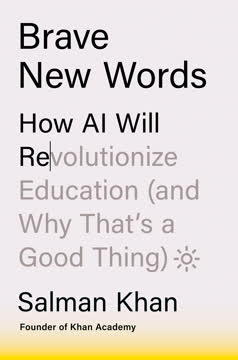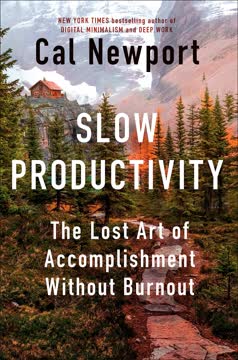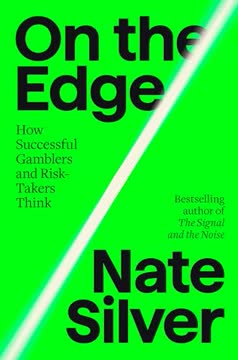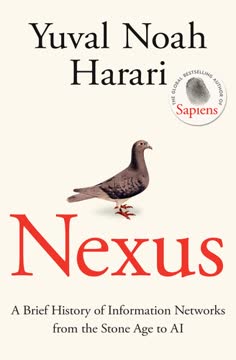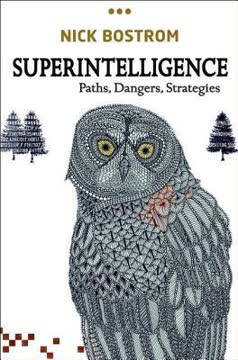重点摘要
1. AI:我们身边的外星智慧
我们发明了从斧头到直升机等增强我们身体能力的技术;还有像电子表格这样的技术,自动化复杂任务;但我们从未构建过一种可以普遍提升我们智力的技术。
一种新形式的智能。 像ChatGPT这样的大型语言模型(LLM)代表了人工智能的突破,展现出几乎人类般的能力。与之前专注于狭窄任务的AI系统不同,LLM可以进行类似人类的对话,生成创意内容,并在各个领域解决复杂问题。
快速采用和影响。 LLM的发展和采用速度前所未有。ChatGPT比历史上任何产品都更快地达到了1亿用户。这种快速融入日常生活和工作流程,正在重塑我们与技术和彼此的互动方式。
伦理和社会影响。 能模仿人类智能的AI的出现,引发了关于意识、本质和未来工作的深刻问题。随着这些系统变得更加先进,社会必须应对AI对齐问题,确保这些强大的工具服务于人类利益,而不是可能对其造成伤害。
2. 锯齿状前沿:AI的不可预测能力
给AI测试总是有问题,因为答案可能在其训练数据中,这实际上允许它通过提前知道答案来作弊。
不均衡的能力。 AI的能力在任务之间分布不均。一些人类觉得困难的任务,AI可以轻松完成,而一些对我们来说看似简单的任务,对AI来说却很具挑战性。这创造了一个难以预测或绘制的AI能力“锯齿状前沿”。
幻觉和局限性。 尽管LLM的能力令人印象深刻,但它们容易产生“幻觉”——生成看似合理但不正确的信息。它们并不真正理解或知道事实,而是根据训练数据中的模式预测可能的词序列。
评估和使用的影响。 锯齿状前沿和幻觉的可能性使得准确评估AI能力或在没有人类监督的情况下依赖它们完成关键任务变得具有挑战性。理解这些局限性对于有效地将AI整合到工作流程和决策过程中至关重要。
3. 对齐:确保AI服务于人类
对齐AI不仅需要阻止潜在的外星神,还需要考虑这些其他影响以及构建反映人类的AI的愿望。
存在风险。 一些AI研究人员担心,如果超级智能AI未能与人类价值观和目标对齐,可能会对人类构成存在风险。这种“对齐问题”是AI伦理和发展的核心关注点。
即时伦理挑战。 除了长期风险,当前的AI系统还提出了更为紧迫的伦理挑战:
- AI决策中的偏见和公平问题
- 与用于训练的数据相关的隐私问题
- 在创建虚假信息或操纵人们方面的潜在滥用
- 对工作和经济不平等的影响
多方面的对齐方法。 解决AI对齐问题需要在多个方面努力:
- 使AI系统更加透明和可控的技术解决方案
- AI开发和部署的伦理指南和法规
- 公众教育和参与,以塑造AI在社会中的未来
- 持续进行AI安全和有益AI开发的研究
4. 与AI合作的四项原则
始终邀请AI参与。
原则1:始终邀请AI参与。 在各种任务中尝试AI,以了解其能力和局限性。这种探索使你能够成为在特定领域应用AI的专家。
原则2:成为循环中的人类。 在使用AI时保持监督和批判性思维。人类判断对于验证AI输出和确保伦理使用仍然至关重要。
原则3:像对待人一样对待AI(但告诉它是什么样的人)。 通过赋予AI特定的角色或身份来框定与AI的互动。这可以导致更有针对性和有效的响应。
原则4:假设这是你将使用的最差的AI。 AI能力正在迅速提高。保持对新发展的开放态度,并准备好迎接AI变得越来越强大的未来。
5. AI作为创意伙伴:增强人类能力
即使有一台可以制造任何东西的机器,我们仍然会默认使用我们熟悉的东西。
增强创造力。 AI展示了非凡的创造能力,通常在标准创造力测试中表现优于人类。然而,它的真正力量在于增强人类的创造力,而不是取代它。
民主化创意表达。 AI工具使得艺术技能有限的人能够以新的方式表达自己。这种创意的民主化有可能释放大规模的人类潜力。
挑战和伦理考量:
- 由于人们过度依赖AI生成的内容,可能导致原创性的丧失
- AI生成作品的版权和归属问题
- 在AI时代重新定义创造力和作者身份的必要性
6. 工作场所革命:AI作为同事
即使你能一夜之间用AI取代医生,患者会愿意被机器看诊吗?责任规则如何运作?其他医疗专业人员如何调整?
任务转型。 AI通过自动化或增强许多任务,特别是在知识密集型领域,正在重塑工作。这并不一定意味着工作被取代,而是工作性质的转变。
生产力提升和技能平衡。 研究表明,AI可以显著提高生产力,特别是对表现较差的工人。这有可能减少组织内部的绩效差距。
适应策略:
- “半人马”方法:人类与AI之间的战略性劳动分工
- “赛博格”方法:将AI深度整合到人类工作流程中
- 专注于独特的人类技能和专业知识
- 重新构想组织结构和流程,以利用AI能力
7. 在AI时代重新想象教育
AI可以帮助我们繁荣,因为它使我们无法再忽视一个事实:很多工作真的很无聊,并且没有特别意义。
家庭作业的末日。 AI完成作业和写论文的能力迫使教育者重新思考传统的评估方法和家庭作业的目的。
AI作为导师和学习伙伴。 AI有潜力提供个性化、适应性的学习体验,可能解决教育中的“两西格玛问题”。
教育重点的转移:
- 强调批判性思维和创造力,而不是死记硬背
- 教授AI素养和与AI工具的有效合作
- 为快速变化的就业市场做准备
- 利用AI创造更具吸引力和互动性的学习体验
8. AI作为教练:增强专业知识和学习
问题在于,为了学会批判性思考、解决问题、理解抽象概念、推理新问题并评估AI的输出,我们需要学科知识。
建立基础知识。 尽管AI拥有庞大的知识库,人类专家仍然需要扎实的事实和理解基础,以有效地与AI合作并评估其输出。
与AI的刻意练习。 AI可以通过提供即时反馈、个性化挑战和持续评估来增强刻意练习的过程。
重新定义专业知识:
- 从记忆转向有效的信息综合和应用
- 发展与AI合作和提示工程的技能
- 培养同情心、创造力和复杂问题解决等独特的人类能力
9. 四种未来:AI对社会影响的情景
理论上没有理由认为这不可能发生,但也没有理由怀疑它可能发生。世界上有AI专家支持这两种观点。
情景1:尽善尽美。 AI能力达到顶峰,导致渐进的改进,但没有重大突破。社会适应当前的AI能力,而不会发生根本性变革。
情景2:缓慢增长。 AI以稳定、可控的速度继续改进。这允许社会、经济和教育系统逐步适应。
情景3:指数增长。 AI的快速进步导致剧烈的社会变化,可能包括广泛的工作替代和对新经济模式的需求。
情景4:机器神。 AI达到或超越人类智能,根本改变人类在世界中的地位,并引发关于我们未来的存在性问题。
为不确定的未来做准备:
- 制定灵活的政策和法规,以适应不同的AI情景
- 投资于AI安全研究和对齐工作
- 促进公众对AI开发伦理影响的对话
- 优先考虑人类与AI的合作和共存,而不是替代
最后更新日期:
FAQ
What's "Co-Intelligence: Living and Working with AI" about?
- Exploration of AI's impact: The book delves into how AI, particularly Large Language Models (LLMs), is transforming various aspects of life, including work, education, and creativity.
- AI as a co-intelligence: It introduces the concept of AI as a "co-intelligence," a tool that can augment human capabilities rather than replace them.
- Practical implications: The author, Ethan Mollick, provides insights into the practical implications of AI in everyday tasks and the broader societal changes it may bring.
- Future of AI: The book also speculates on the future of AI, discussing potential scenarios ranging from slow growth to the emergence of superintelligent machines.
Why should I read "Co-Intelligence: Living and Working with AI"?
- Understanding AI's role: It offers a comprehensive understanding of how AI is reshaping industries and personal lives, which is crucial in today's tech-driven world.
- Practical advice: The book provides practical advice on how to integrate AI into daily tasks, making it a valuable resource for professionals and students alike.
- Insightful scenarios: Mollick presents various future scenarios of AI development, helping readers prepare for potential changes in the job market and society.
- Engaging narrative: The book is written in an engaging style, making complex AI concepts accessible to a broad audience.
What are the key takeaways of "Co-Intelligence: Living and Working with AI"?
- AI as a General Purpose Technology: AI is a transformative technology that affects all industries, similar to the internet or steam power.
- Human-AI collaboration: The book emphasizes the importance of humans working alongside AI, leveraging its strengths while maintaining human oversight.
- Ethical considerations: It discusses the ethical implications of AI, including issues of bias, privacy, and the potential for misuse.
- Future preparedness: Readers are encouraged to prepare for a future where AI plays a significant role in both personal and professional spheres.
How does Ethan Mollick define "co-intelligence" in the book?
- Collaborative intelligence: Co-intelligence refers to the collaboration between humans and AI, where AI acts as a partner rather than a replacement.
- Augmenting human capabilities: It emphasizes using AI to enhance human decision-making, creativity, and productivity.
- Dynamic interaction: The concept involves a dynamic interaction where both humans and AI contribute to problem-solving and innovation.
- Ethical alignment: Co-intelligence also includes ensuring that AI systems are aligned with human values and ethical standards.
What practical advice does "Co-Intelligence: Living and Working with AI" offer for integrating AI into daily tasks?
- Experiment with AI: The book encourages readers to experiment with AI in various tasks to understand its capabilities and limitations.
- Human in the loop: It stresses the importance of keeping humans involved in AI processes to ensure accuracy and ethical decision-making.
- Task delegation: Mollick suggests identifying tasks that can be delegated to AI, freeing up time for more complex and creative work.
- Continuous learning: Readers are advised to stay updated on AI developments and continuously learn how to leverage new tools effectively.
What are the potential future scenarios of AI development discussed in the book?
- As Good as It Gets: This scenario suggests that AI may have reached its peak capabilities, with no significant advancements expected.
- Slow Growth: AI continues to improve at a steady pace, leading to gradual changes in industries and society.
- Exponential Growth: AI capabilities grow rapidly, leading to significant disruptions and transformations across various sectors.
- The Machine God: A scenario where AI achieves superintelligence, potentially surpassing human intelligence and altering the balance of power.
How does "Co-Intelligence: Living and Working with AI" address the ethical concerns of AI?
- Bias and fairness: The book discusses how AI systems can inherit biases from their training data and the importance of addressing these issues.
- Privacy concerns: It highlights the potential risks to privacy posed by AI's ability to process vast amounts of personal data.
- Alignment with human values: Mollick emphasizes the need for AI systems to be aligned with human values to prevent harmful outcomes.
- Regulatory challenges: The book explores the challenges of regulating AI development and ensuring responsible use.
What role does AI play in education according to "Co-Intelligence: Living and Working with AI"?
- AI as a tutor: The book discusses the potential of AI to provide personalized tutoring, enhancing learning outcomes for students.
- Flipped classrooms: AI can support flipped classroom models by delivering content outside of class and enabling active learning during class time.
- Homework and assessments: It addresses the challenges AI poses to traditional homework and assessments, necessitating new approaches to education.
- Skill development: Mollick suggests that AI can help develop critical thinking and problem-solving skills by providing real-time feedback and support.
How does Ethan Mollick suggest AI can enhance creativity?
- Idea generation: AI can assist in generating a wide range of ideas, serving as a valuable tool in brainstorming sessions.
- Creative collaboration: The book highlights how AI can collaborate with humans in creative tasks, offering new perspectives and insights.
- Overcoming creative blocks: AI can help overcome creative blocks by providing suggestions and alternative approaches to problems.
- Art and design: Mollick discusses the role of AI in art and design, where it can produce novel and unique creations.
What are the best quotes from "Co-Intelligence: Living and Working with AI" and what do they mean?
- "AI is a tool, not a crutch." This quote emphasizes the importance of using AI to enhance human capabilities rather than relying on it entirely.
- "We have invented a kind of alien mind." It highlights the unique nature of AI as a non-human intelligence that can interact with humans in unprecedented ways.
- "The future is unfolding, but our destination is unwritten." This quote reflects the uncertainty and potential of AI's impact on the future, urging readers to shape its development.
- "AI can be a mirror, reflecting back at us our best and worst qualities." It underscores the idea that AI reflects human values and biases, making ethical considerations crucial.
How does "Co-Intelligence: Living and Working with AI" suggest we prepare for the future of work with AI?
- Embrace change: The book encourages readers to embrace the changes AI brings to the workplace and adapt to new ways of working.
- Skill development: It emphasizes the importance of developing skills that complement AI, such as critical thinking and creativity.
- Collaboration with AI: Mollick suggests fostering a collaborative relationship with AI, where humans and machines work together effectively.
- Ethical awareness: Readers are advised to stay informed about the ethical implications of AI and advocate for responsible use in their organizations.
What is the "Jagged Frontier" concept in "Co-Intelligence: Living and Working with AI"?
- Invisible boundary: The Jagged Frontier refers to the invisible boundary between tasks that AI can perform well and those it struggles with.
- Experimentation required: Understanding the Jagged Frontier requires experimentation to determine which tasks are suitable for AI.
- Dynamic nature: The frontier is dynamic and changes as AI capabilities evolve, necessitating continuous learning and adaptation.
- Strategic task allocation: Mollick suggests using the Jagged Frontier concept to strategically allocate tasks between humans and AI for optimal results.
评论
《共智:与人工智能共生共事》提供了关于将人工智能作为协作工具的实用建议。读者们欣赏莫里克的平衡方法,既突出了人工智能的潜力,也承认了其局限性。书中提供了在各个领域有效整合人工智能的策略,强调了人类监督和批判性思维。一些人认为这是人工智能新手的宝贵入门书,而对该主题熟悉的人则认为内容有些浅显。由于人工智能的快速发展,书中的及时见解可能很快就会过时。总体而言,这本书被视为一本易于理解的指南,帮助读者在不断变化的人工智能领域中导航。
Similar Books
